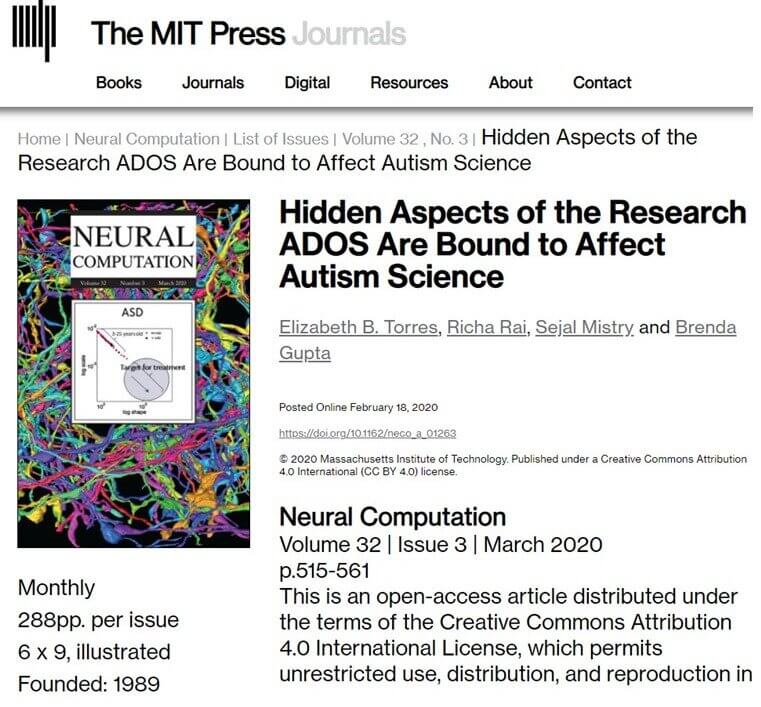Peer Reviewed
Peer Reviewed
Stochastic characterization of EEG signals during the lingering sensation of discomfort evoked by temperature results in the perception of pain. This perception fundamentally differs in stochastic signature: Participants with over responsivity to pain produce EEG signals well characterized symmetric distributions amenable to sustain a memory-buffer predicting the impending pain-related events. Healthy controls show a memoryless exponential distribution that cannot predict impending pain-related events. They do not perceive the same stimulus as painful.
Videos
Department Colloquium For Torres Full Professorship Featuring Autism Research Program
Peer Reviewed Articles
Cover Story: The data from digitized social interactions can take us beyond the limits of the naked eye and help us capture the autistic capacity for social readiness. Using personalized analytics, we can track the person’s dynamics with biosensors that continuously co-register the micro-movements derived from their biorhythms. More important yet, we can track the spontaneously self-emerging cohesiveness of their social rapport and better inform our decisions on whether and when the socio-motor patterns of autistic people unexpectedly match those of neurotypical controls performing the same social task. Our new unifying statistical methods help us bridge the enormous social gap that current diagnostics, missing this information, have created between autistic and neurotypical people.

Neural Computation
Traditional Autism Diagnostics currently driving and informing Autism Science are statistically flawed. These flawed criteria would never help people on the spectrum become an integral part of our society. They need a total revamp.
This site is protected by reCAPTCHA. Google Privacy Policy and Terms of Service apply.
© Sensory-Motor Integration Lab (SMIL). All Rights Reserved. Website made by akby.
This site is protected by reCAPTCHA. Google Privacy Policy and Terms of Service apply.
